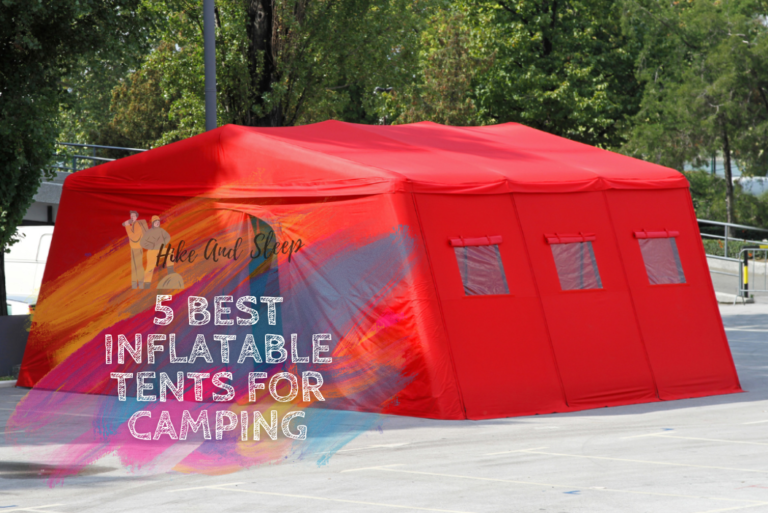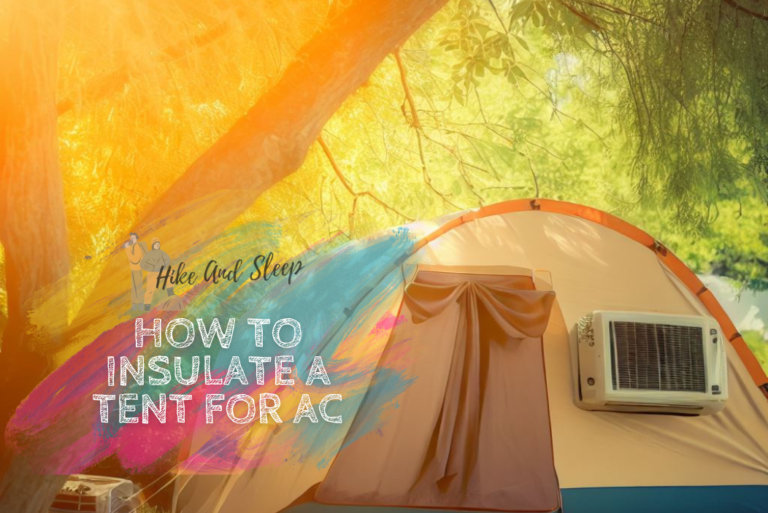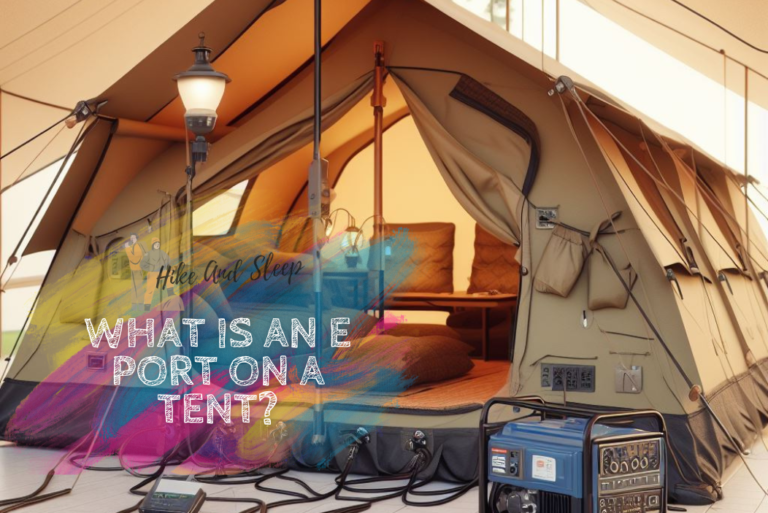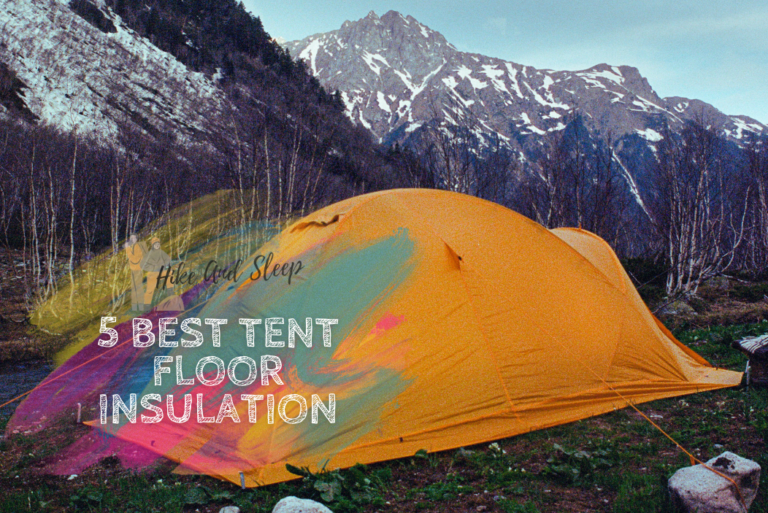How to Build a Tent Pad: A Guide for Camping Enthusiasts
You’re out in the great outdoors, and the starry night sky and beauty of nature are all around you. You’re all set to spend the night in your comfortable tent when reality suddenly hits you hard beneath as you sit (literally haha). You can feel every rock beneath you when you lay down, so it’s hardly the comfortable night’s sleep you were looking for.
That’s where a tent pad comes to the rescue. Wondering what it is? Think of it as the solid ground foundation for your tent, ensuring your campsite is both comfy and safe.
So, why is it a camping essential? Well, it keeps you dry when the rain pours, shields you from those pesky sharp rocks, and guarantees you wake up feeling refreshed, not sore.
Don’t worry if you’re new to camping; this guide is designed with beginners in mind. We’ll keep it simple and guide you through the process of how to build a tent pad on your own. With easy-to-follow steps, you’ll be well on your way to enjoying nature without sacrificing a good night’s sleep.
Ready to get started?
Table of Contents
How To Build a Tent Pad: Understanding the Basics
You might be wondering, “Why bother with a designated spot?” Well, my camping buddy, there are some pretty sweet perks to having one:
1. Comfort: A tent pad gives you a flat, smooth surface to sleep on, so no more rolling around on rocks and roots. You’ll wake up feeling rested and ready for adventure.
2. Dryness: The tent pad keeps your sleeping area dry and mud-free.
3. Durability: Over time, tents can wear out from rubbing against the ground. A tent pad acts as a cushion, extending the life of your beloved shelter.
Addressing Safety Concerns
Plunking your tent down willy-nilly isn’t ideal. Here’s why:
1. Drainage Dilemmas: Picking the wrong spot could lead to water pooling around your tent. Nobody wants to wake up in a puddle.
2. Rocky Road: Sharp rocks and uneven ground can poke through your tent floor, making for an uncomfortable night’s sleep and possibly damaging your gear.
How To Build a Tent Pad: Step-by-step
step 1: Gathering Your Materials
Essential Materials for Your Tent Pad
Now that you know why a tent pad is a camper’s best friend, it’s time to gear up with the right stuff. Here’s your shopping list:
1. Shovel: This trusty tool will be your ground’s best friend. It helps you dig, level, and shape the area where your tent will rest.
2. Tarp or Ground Cloth: Lay this down under your tent to protect it from moisture. It’s like a cozy, waterproof blanket for your tent floor.
3. Stakes or Pegs: These little wonders keep your tent firmly anchored to the ground. No need to worry about your tent taking flight in the middle of the night.
4. Rocks or Logs (Optional): If your camping spot has a tendency to flood, rocks or logs can create a barrier around your tent pad, keeping the water at bay.

Why Each Material is Necessary
Why these things are necessary:
- Shovel: You’ll use this to clear debris, level the ground, and make your tent pad as comfy as possible.
- Tarp or Ground Cloth: It’s your moisture shield. Without it, water from rain or dew can seep into your tent and dampen your camping spirit.
- Stakes or Pegs: These are like the anchors for your tent. Without them, a gust of wind could take your tent for a ride, and that’s no fun.
- Rocks or Logs (Optional): If you’re in a spot where water likes to gather, these act as a barrier, keeping your tent high and dry.
Step 2: Choosing the Right Location
Finding Your Perfect Camping Spot
Alright, camper, now that you’ve got your gear ready, it’s time to pick the perfect spot for your tent pad. Here’s the lowdown:
1. Ideal Camping Spot: Look for a flat, level area. You don’t want to wake up feeling like you’ve spent the night on a roller coaster. Avoid slopes and humps.
2. Terrain Matters: Pay attention to the ground. Soft, forested areas are kinder on your back than rocky, uneven ground. If you can, go for the soft stuff.
3. Water Drainage: This is a biggie. You don’t want to set up camp in a spot that turns into a puddle when it rains. Make sure your chosen spot allows water to run away from your tent.
4. Proximity to Amenities: Consider how close you are to essentials like water sources and restrooms. Being too far from these can make your camping trip more challenging.
5. Leave No Trace: Think about the environment. Choose a spot that’s at least 200 feet away from lakes and streams to protect the water quality.
step 3: Preparing the Ground
Getting the Ground Ready for Your Tent Pad
Now that you’ve found your ideal camping spot, it’s time to get down and dirty (figuratively, of course) by preparing the ground. Here’s how to make it tent-ready:
Clearing the Area of Debris and Rocks
- Scout and Remove: Walk around the area, picking up any sticks, rocks, or sharp objects. You don’t want any unwelcome surprises under your sleeping bag.
- Dig a Bit: Use your trusty shovel to dig a shallow trench around the perimeter of your tent pad. This helps water flow away from your sleeping area.
Leveling the Ground – Step by Step
- Start with a Blank Canvas: After clearing, take a good look at the ground. If it’s bumpy, uneven, or has any dips, you’ll want to level it out.
- Dig and Fill: Use the shovel to remove excess dirt from the high spots and fill in the low spots. The goal is to create a flat, even surface.
- Test and Adjust: Walk around and test the ground. If you feel any soft spots or unevenness, keep adjusting until it’s comfy for your feet.
- Final Check: Lay your ground tarp or cloth over the leveled ground. Walk on it gently to ensure it’s flat.
Step 4: Laying Down a Ground Tarp
The Magic of Ground Tarps: Cozy, Dry, and Protected
Now that your tent pad is leveled and clean, it’s time to add a layer of protection – the ground tarp. Here’s why it’s crucial and how to use it:
Purpose of Using a Ground Tarp
A ground tarp is like your tent’s best friend. It serves several awesome purposes:
- Moisture Barrier: It acts as a barrier between your tent’s floor and the ground, keeping moisture at bay. No more waking up in a damp sleeping bag!
- Extra Durability: Taking the hits from rocks and sticks, helps extend the life of your tent. Think of it as your tent’s bodyguard.
- Cleanliness: It keeps dirt and mud from seeping into your tent. Less mess inside means less cleaning for you.
How to Properly Position and Secure the Tarp
- Lay it Flat: Unroll your ground tarp and lay it flat on the leveled tent pad. Make sure it covers the entire area where your tent will sit.
- Secure the Corners: Fold any excess tarp under your tent pad, so it doesn’t stick out. Use rocks or other heavy objects to keep the tarp from shifting around.
- No Overhang: Be sure the tarp doesn’t extend beyond the edges of your tent pad. You want it snug and tucked.

step 5: Staking Down the Tent
Staying Grounded: How to Secure Your Tent
Now that your tent pad is prepped and ready, it’s time to ensure your tent doesn’t take off in the wind or fold like a house of cards. Staking down the tent is your next mission, and here’s how to do it right:
Get the Right Stakes: Start by ensuring you have the right stakes for your tent. They should be sturdy and long enough to grip the ground securely.
Stake Placement: Place the stakes at each corner of your tent. If your tent has additional guy lines or loops, use stakes for those too.
Angle Matters: Angle the stakes away from the tent at about a 45-degree angle. This helps them hold better in the ground.
Hammer Time: Use a mallet or a rock to gently tap the stakes into the ground until they’re snug. Don’t go too deep; just enough to keep them in place.
Tension the Tent: Once all stakes are in, tighten the tent’s guy lines (if it has them). This adds extra stability.
Securing your tent isn’t just about preventing it from taking flight; it’s about your safety and comfort:
- Wind Protection: A securely staked tent can handle gusty winds without collapsing.
- Trip Prevention: Stakes keep your tent’s floor taut, reducing the chances of tripping and stumbling inside.
- Peace of Mind: With a well-staked tent, you can rest easy knowing your shelter is steady and reliable.
step 6: Maintaining and Packing Up
Tips for Keeping the Tent Pad Clean During Your Stay
- Shoes Off: Encourage everyone to remove their shoes before entering the tent. It prevents dirt and debris from being tracked inside.
- Wipe Your Feet: Place a doormat or small rug outside the tent entrance. Give your feet a good wipe before stepping in.
- No Food Inside: Enjoy your meals outside the tent. Food crumbs can attract unwanted critters.
- Trash Control: Keep a trash bag handy and dispose of waste properly. Never leave trash or food scraps around your campsite.
Recommended Read:
- The Ultimate Guide To Insulating Your Tent Floor
- Can You Sleep In A Tent When It’s Raining
- How To Winterize A Tent
- Best Air Conditioner For Tent Camping
- Best Inflatable Tents For Camping
How to Disassemble and Pack Up Your Tent Pad
- Takedown Checklist: Start by taking down any guy lines, removing stakes, and disconnecting the rainfly (if you have one).
- Fold Carefully: Fold your tent neatly, following the manufacturer’s instructions. Avoid stuffing it into the bag, as this can damage the fabric and zippers.
- Inspect for Debris: Before packing, check the tent pad for any remaining debris, like rocks or twigs. Remove them to keep your tent in tip-top shape.
- Pack It Up: Once your tent is clean and dry, pack it into its bag or storage sack. Don’t forget the ground tarp and any other gear.
Conclusion
And there you have it, fellow adventurers – your guide to building a cozy tent pad. Remember, it’s all about creating a comfy and safe spot for your camping escapades. From picking the perfect location to securing your tent, we’ve covered it all in simple steps.
Plus, we talked about keeping your spot clean and packing up like a pro to leave nature as you found it. So, the next time you’re out under the stars, you’ll have the know-how to make your camping experience a whole lot better.
Now, go out there, set up your tent pad, and let the great outdoors embrace you in comfort. Happy camping!







